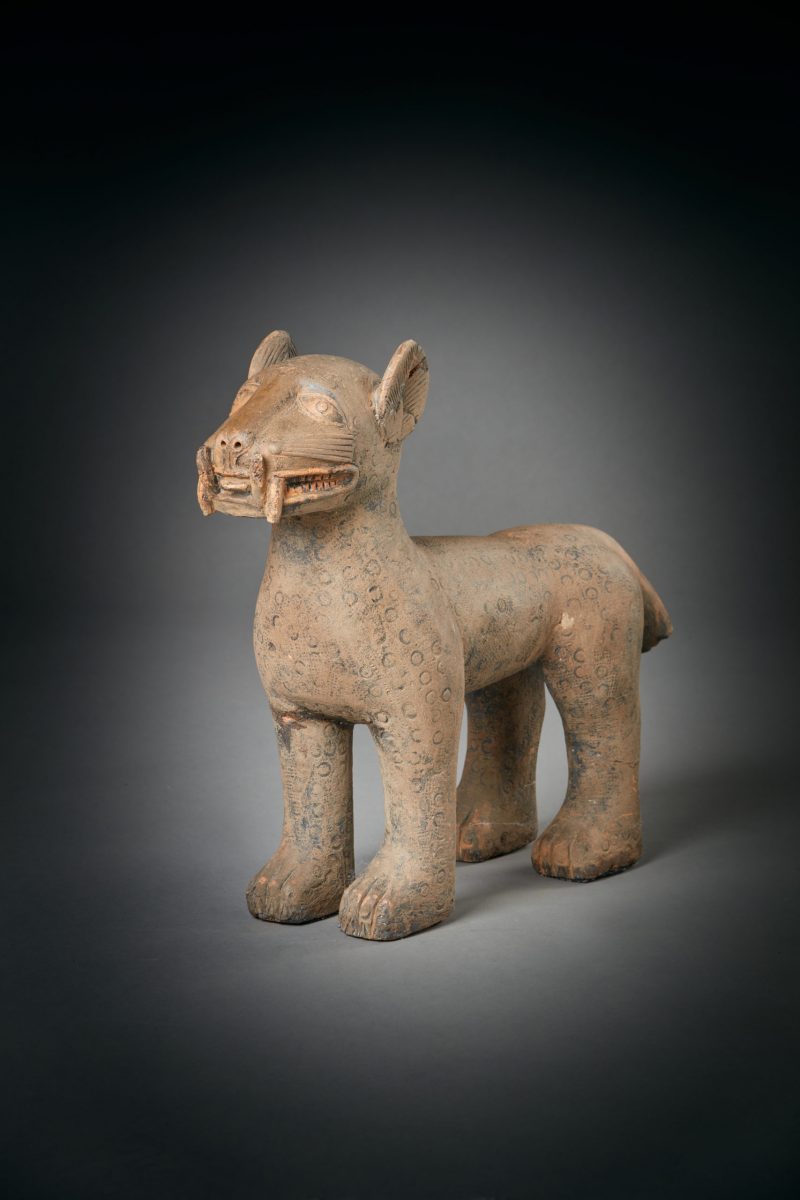Modakeke-Ife Leopard
Modakeke-Ife Leopard Cirça 1000–1200 AD Terracotta 19 x 7 x 23 in 48 x 18 x 58 cm Yoruba people; Southwestern Nigeria, West Africa Ile-Ife is locally regarded by all Yoruba descendants as their immediate place of origin. Thus, from Ile-Ife their ancestors dispersed to establish towns in the southwestern regions of Nigeria, West Africa. Ife was a center of manufacturing during the Iron and Bronze Ages. Observation of their art makes it certain that mining and metallurgy were prent among Ife society and enjoyed by royalty. The oldest and most powerful of these dispersed kingdoms was that of Oyo. The Oyo kingdom and its empire suffered a great collapse that drove the people back to their original homelands of the Ife area. As they migrated homeward, they continued to spread the art of smelting, especially in towns like Igbaja, Oyo, Isundunrin, and back to Ife. Among the returning soldiers and smelters were those who carried the technology of iron smelting with them. Upon their return to the Ife area, they separated themselves from those who had originally stayed at Ife and formed a separate settlement, an area that was still in the confines of the Ife state, and called it Modakeke. It is from this area of Ife that the terracotta leopard was found some seventy-five years ago. Thus the reason for the artifact’s title of Modakeke-Ife is after the area and region of its discovery. This artifact has certificates of thermoluminescence analysis reports from Oxford, authentication laboratories in England;, scientific authenticity testing reports, from the Antique Analytics GMBH; Institute for Scientific Research, Germany; and Ralf Kotalla, laboratory, and from Provenance: The ex-collection of Dr. A. Lindner, Germany and later purchased by Maxwell Price
